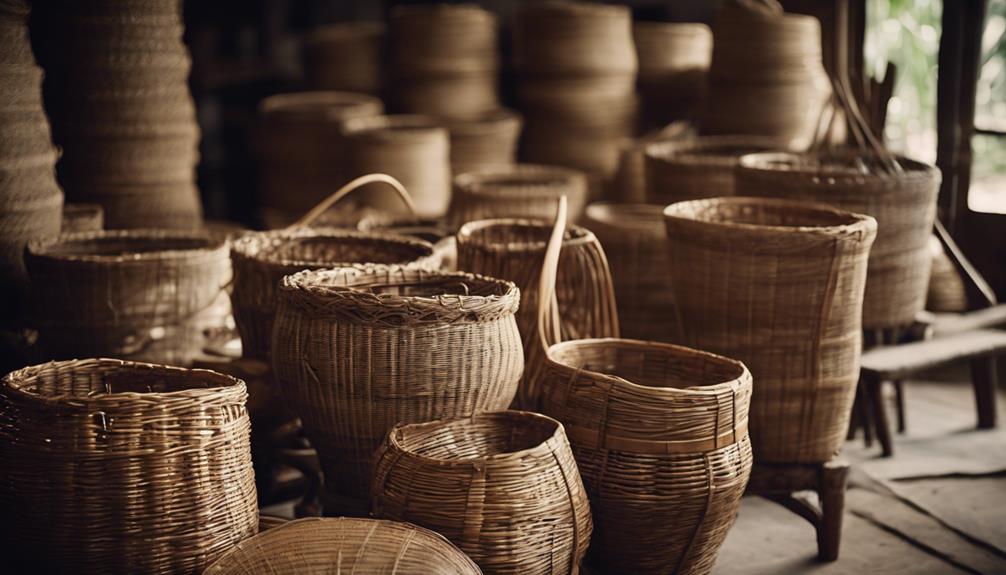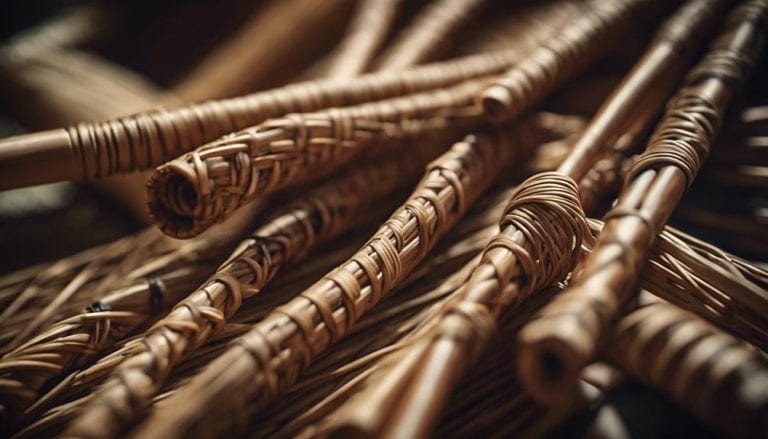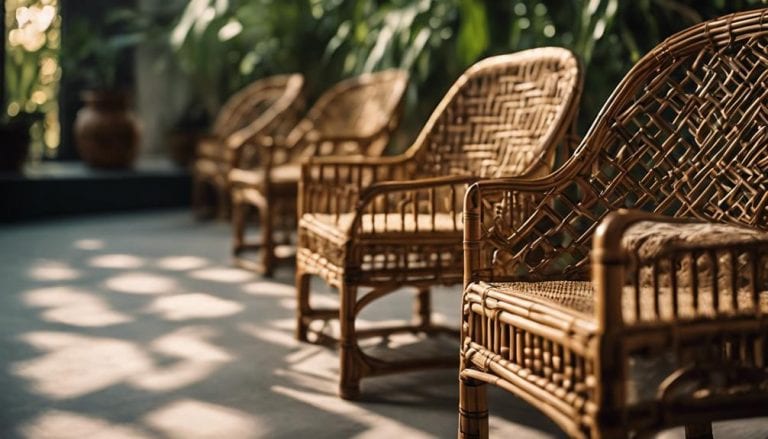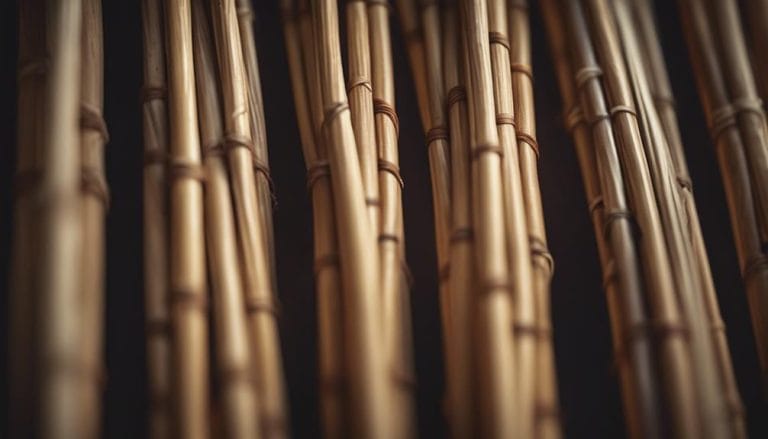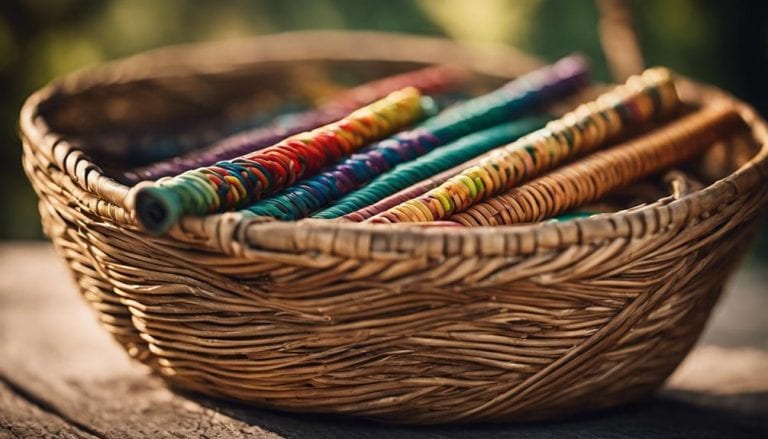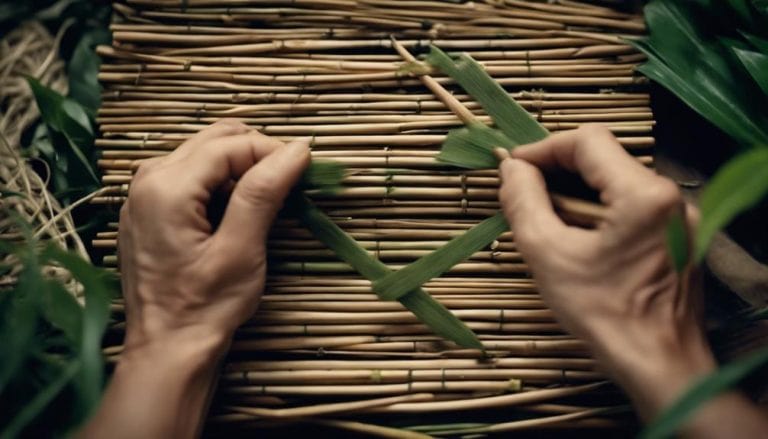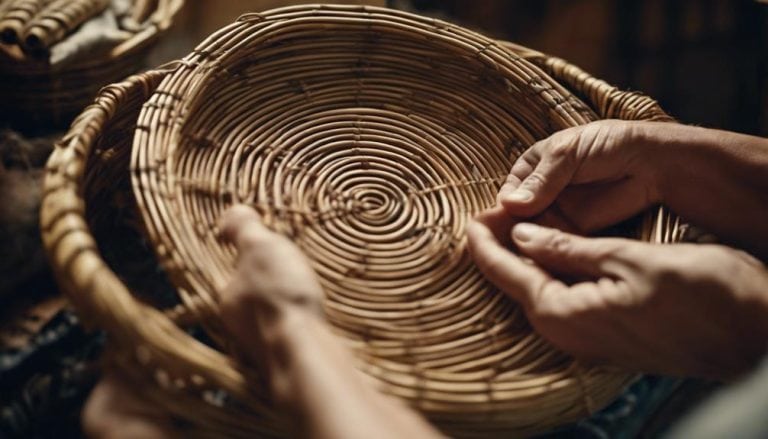Rattan Cane for Weaving: A Comprehensive Guide
In my journey as a craftsman, I’ve discovered that weaving with rattan cane isn’t just about technique; it’s a blend of history, culture, and skill. For instance, while working on a Victorian-era chair restoration, I realized the importance of understanding the how and why behind each weaving pattern and technique.
This book, “Rattan Cane for Weaving: A Comprehensive Guide,” is both a practical manual and an insightful exploration of rattan weaving. As you explore its pages, you’ll uncover the secrets behind selecting the right type of cane, preparing it for weaving, and mastering various techniques.
But what’s truly fascinating is how this knowledge opens a window into the past and invites you to carry forward a tradition handed down through generations. Let’s embark on this journey together, where each chapter enhances your skills and deepens your appreciation for the craft.
In “Rattan Cane for Weaving: A Comprehensive Guide,” you’ll find detailed instructions for using rattan cane in weaving projects. This guide offers valuable insights for beginners and experienced weavers alike.
Key Takeaways
- Rattan cane’s versatility is showcased through its various types, each suited for different crafting needs.
- Proper preparation, including soaking and dyeing, is crucial for the flexibility and aesthetic appeal of rattan weaving.
- To ensure longevity, rattan furniture requires regular maintenance, such as wiping with a damp cloth and avoiding sunlight.
- Innovations in rattan crafting, like creating unique lampshades, demonstrate the material’s adaptability to modern designs.
History of Rattan Cane
While rattan cane has been integral to the craft of weaving for centuries, its origins trace back to ancient civilizations in Egypt and China, where its versatility, strength, and durability were first harnessed. This natural material’s journey through time is not just a tale of utility but one deeply interwoven with cultural influences and artistic evolution. In Egypt, rattan was utilized for furniture that could withstand the harsh, arid climate, while in China, it became synonymous with intricate household items, showcasing the craftsmen’s skill in manipulating this flexible palm.
As a passionate observer of this craft, I’ve seen how rattan’s natural variations in color and texture add a unique character to furniture pieces and reflect the rich biodiversity of the tropical regions where it thrives. Indonesia, a key player in the rattan industry, has propelled the material onto the global stage, blending traditional techniques with modern craftsmanship. This fusion has ensured rattan’s relevance and adaptability, echoing the resilience of the communities that have relied on it for generations.
The artistic evolution of rattan weaving, underpinned by cultural influences, underscores a legacy of innovation and sustainability. It’s a testament to how traditional materials can find new relevance in contemporary design, bridging the past with the present.
Types of Rattan Cane
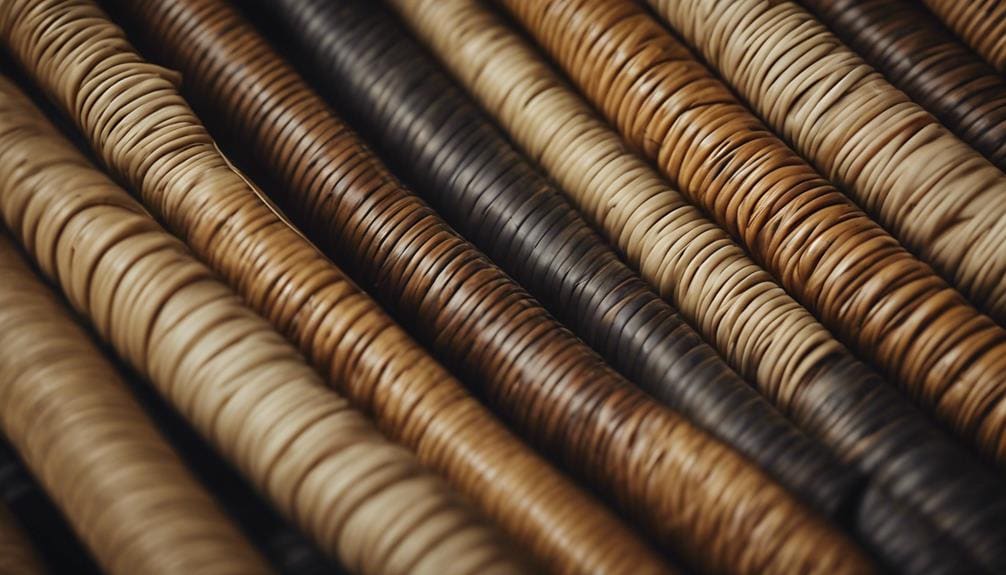
Delving into the types of rattan cane, we find that this climbing palm species, integral to weaving, manifests in varieties such as Malacca, Manila, and Calamus, each distinguished by unique properties that cater to specific crafting needs. With its smooth surface, Malacca rattan proves ideal for fine-weaving projects, allowing artisans to create intricate rattan patterns that elevate the aesthetic appeal of both traditional and innovative designs. Its durability ensures these pieces aren’t just visually appealing but also long-lasting.
Manila rattan’s thicker, more flexible nature opens the door to creative applications in rattan furniture. This type lends itself to constructing larger furniture pieces and baskets, providing a robust foundation that supports both the weight and the dynamic forms of contemporary designs.
Calamus rattan, celebrated for its exceptional strength, is the go-to for heavy-duty weaving applications. This toughness makes it indispensable in crafting items that demand resilience, ensuring that the final products meet and exceed durability expectations.
In exploring these types, it’s clear that rattan cane’s versatility lies in its aesthetic appeal and its ability to adapt to various creative demands, from delicate patterns to sturdy furniture, making it a favored material among craftsmen and designers alike.
Preparing Rattan for Weaving
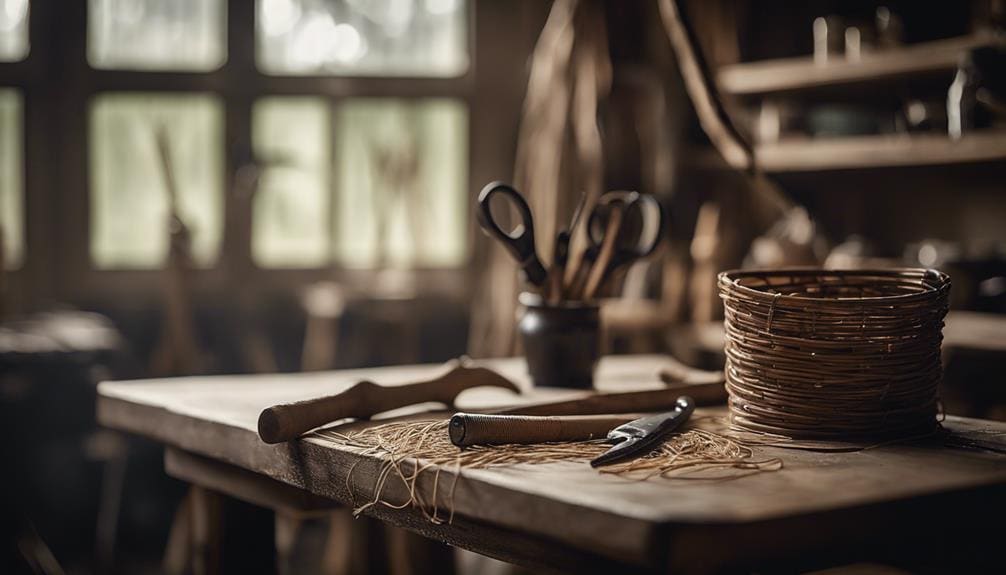
Before weaving can commence, it’s essential to properly prepare the rattan, starting with harvesting mature vines, which involves stripping off the outer skin and cutting the core into lengths suitable for use. The next step, soaking the rattan, is critical. I’ve found that different soaking methods can significantly affect the material’s flexibility and ease of weaving. Submerging the rattan in water for a precise duration—often overnight—ensures it becomes pliable enough to be woven into intricate designs without breaking.
Color variations in rattan add another layer of complexity to the preparation process. Dyeing the rattan before weaving allows for a wide range of aesthetic options, from subtle natural hues to vibrant tones. Achieving the desired color involves careful control over the dyeing process, including the choice of dye, soaking time, and drying conditions.
Throughout these preparation stages, I pay close attention to maintaining the rattan’s integrity. Properly prepared rattan is durable and flexible, making it an ideal material for crafting high-quality woven items. This meticulous preparation transforms raw rattan into a versatile weaving material, ready to be crafted into beautiful, sustainable creations.
Weaving Techniques Explained
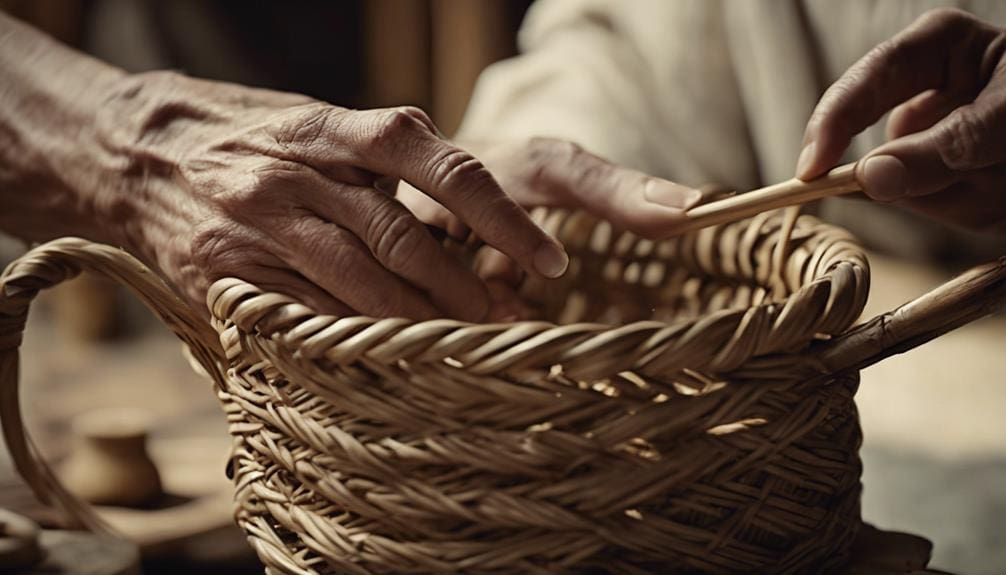
Having meticulously prepared the rattan for weaving, we now explore the techniques that transform this flexible material into intricate and decorative pieces. The art of rattan weaving offers a rich tapestry of techniques, each with unique charm and complexity. Among these, some stand out for their advanced patterns and eco-friendly options, showcasing the versatility and sustainability of rattan as a material.
| Technique | Description | Notable Features |
|---|---|---|
| Hand Caning | Traditional method, weaving by hand. | Allows for intricate patterns. |
| French Needle Caning | Utilizes a needle to create detailed designs. | Known for advanced patterns. |
| Rush Weaving | It involves twisting materials into long strands. | Offers eco-friendly options. |
| Wicker Wrapping | Wraps rattan around frames for structure. | Durable and versatile. |
These techniques, from hand caning to wicker wrapping, demonstrate the adaptability of rattan cane and its ability to marry tradition with innovation. Each method requires a keen eye for detail and a steady hand, ensuring that the final product is not just a piece of furniture or decor but a testament to the weaver’s skill and creativity.
Maintenance and Care Tips
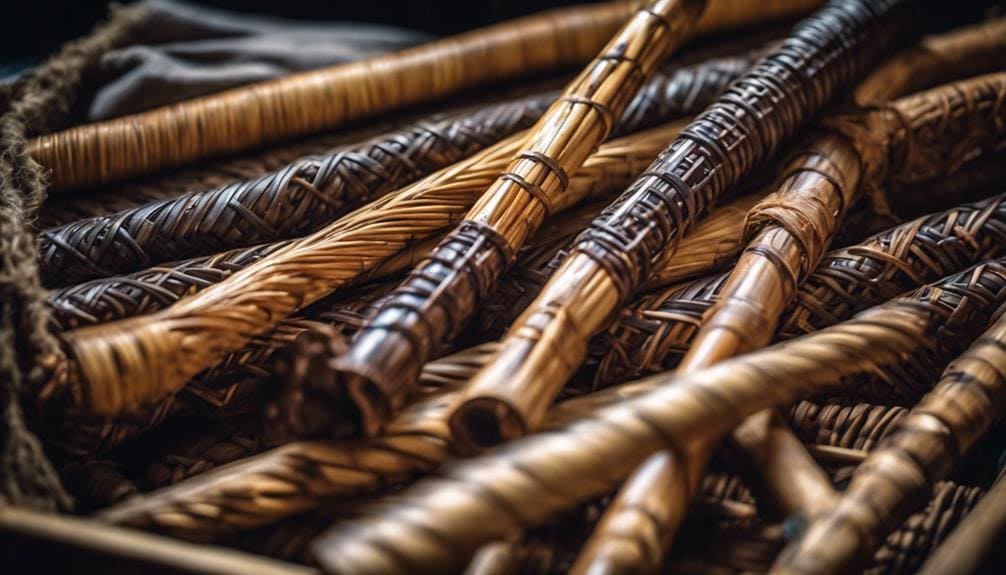
Adopt a regular maintenance routine to ensure your rattan furniture retains its beauty and durability. One foundational cleaning technique involves using a damp cloth to gently wipe the surface, effectively removing dust and dirt buildup. This simple step is vital for preserving the material’s integrity. However, preservation methods must also address environmental factors. I’ve learned to avoid placing my rattan pieces in direct sunlight, as UV rays can cause the material to dry out and potentially crack.
To combat this, I apply a coat of clear lacquer or furniture wax, providing a protective layer that shields the rattan from moisture and maintains its aesthetic appeal. For long-term care, preventative measures are key. Utilizing a soft brush attachment on a vacuum cleaner allows me to remove debris from the intricate weave without causing damage.
Additionally, storing rattan furniture in a dry, well-ventilated area is essential to prevent mold or mildew growth and ensure longevity. Adhering to these maintenance and care tips has allowed me to preserve the condition of my rattan furniture, ensuring it remains a cherished part of my home for years to come.
Inspirational Project Ideas
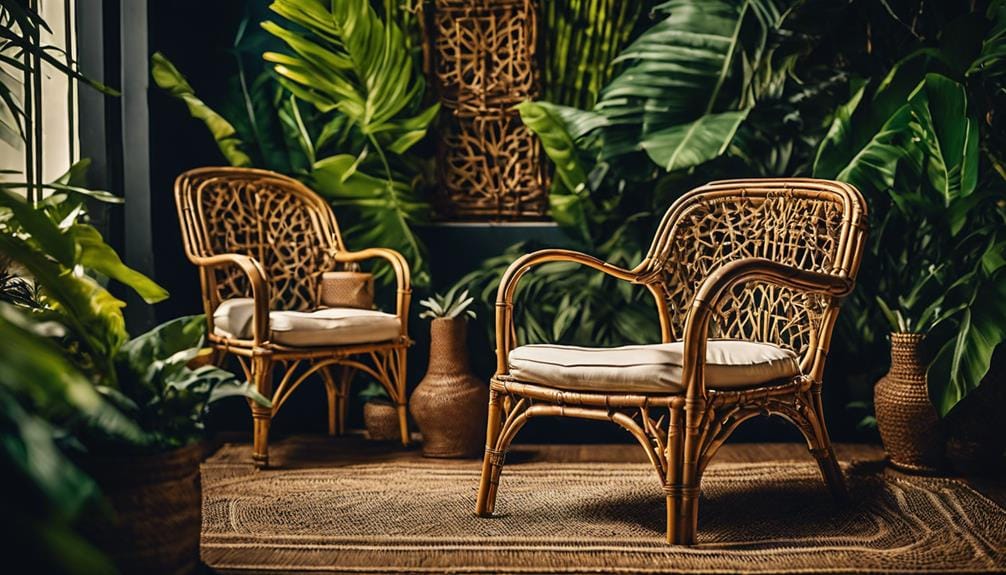
Exploring innovative rattan cane weaving project ideas can transform ordinary materials into extraordinary furniture and home decor. Diving into creative applications, I’ve discovered the joy of crafting unique lampshades, which serve as functional items and artistic creations that add warmth and texture to a room. The challenge of experimenting with different weaving patterns and techniques has been an exhilarating journey, pushing me to add unique twists to each piece, ensuring no two are the same.
Delving deeper, I’ve learned to intertwine rattan cane with other materials like wood or metal, creating stunning mixed-media pieces that stand as a testament to modern adaptations of traditional weaving. This fusion not only enhances the structural integrity of the pieces but also introduces an intriguing visual appeal that captivates any observer.
Drawing inspiration from traditional rattan furniture, I’ve adapted these designs to suit modern aesthetics, infusing my projects with classic elegance and contemporary flair. Reimagining these designs while incorporating my personal touch has been profoundly rewarding. It’s a creative journey that fuels my passion for rattan cane weaving, inspiring me to explore further and push the boundaries of what’s possible.
Frequently Asked Questions
What Is the Difference Between Rattan and Cane?
I’ve learned that rattan is a vine-like palm that lives in tropical climates, while cane is its treated outer bark. Rattan grows by climbing trees, and the cane’s treatment makes it perfect for intricate weaving.
How Long Do You Soak a Cane for Weaving?
I’ve soaked my cane in warm water for an eternity, or at least 12 to 24 hours, to transform it from stubborn to supple. Drying time is crucial, so gently pat it to ensure it’s ready for weaving.
What Are the Different Cane Weave Patterns?
I’ve explored various cane weave patterns, delving into weave pattern history and gleaning cane maintenance tips. From traditional checkerboards to intricate hexagons, each pattern offers furniture pieces a unique aesthetic and functional quality.
What Is Cane Weaving Called?
I’ve learned that, like a spider weaving its web, cane weaving, also known as chair caning, is an intricate art. It utilizes the cane’s durability and weaving techniques to create functional yet ornate pieces.
Conclusion
In wrapping up, it’s clear that mastering the art of weaving with rattan cane is not just about intertwining strands but a dance with history and tradition. As we’ve journeyed from the raw essence of rattan to the finesse of creating tangible memories, each twist and turn has been a step towards preserving a craft that whispers tales of resilience and beauty. The meticulous care and innovative techniques shared not only ensure the longevity of our creations but also echo a deeper commitment to sustainability and cultural heritage.

